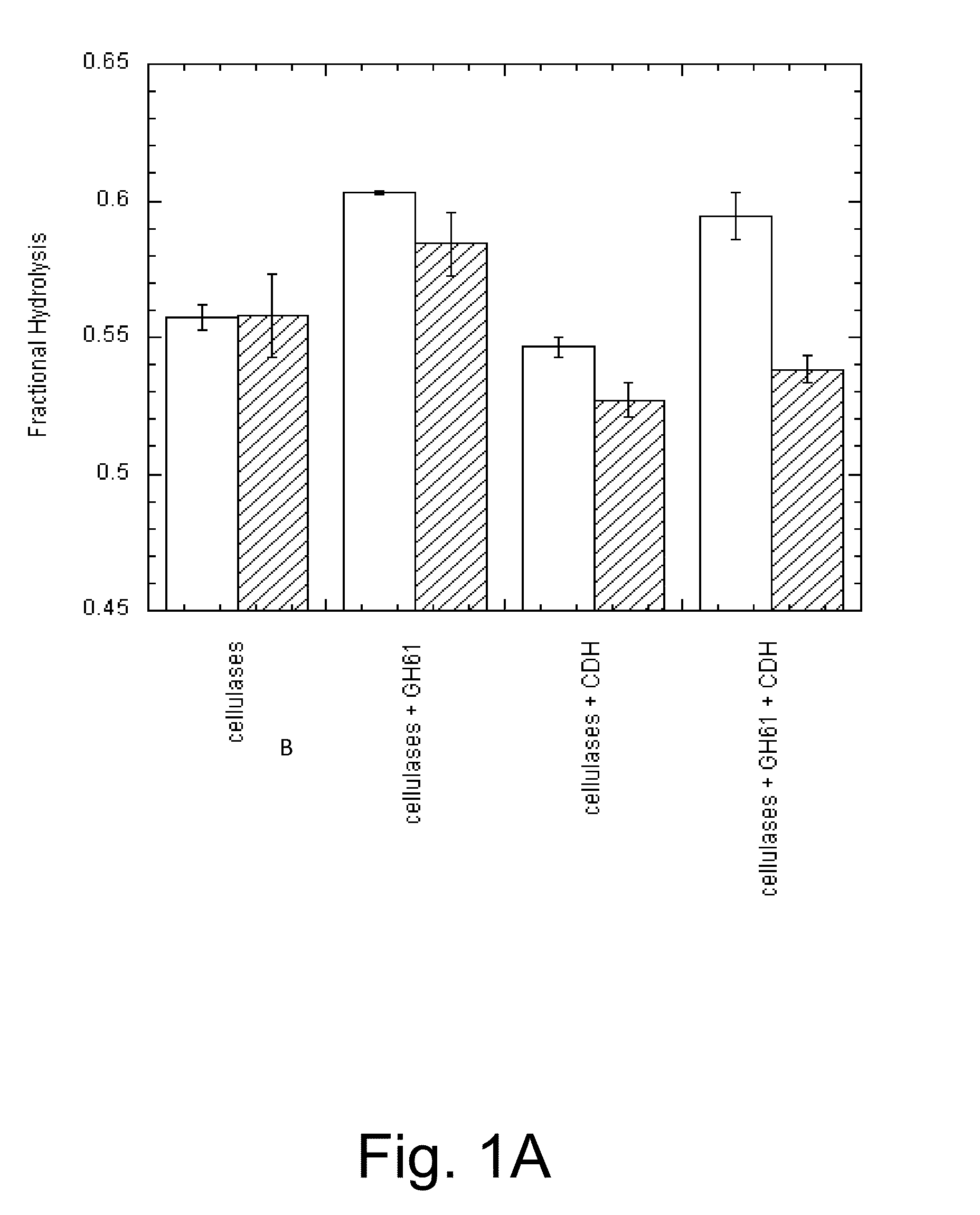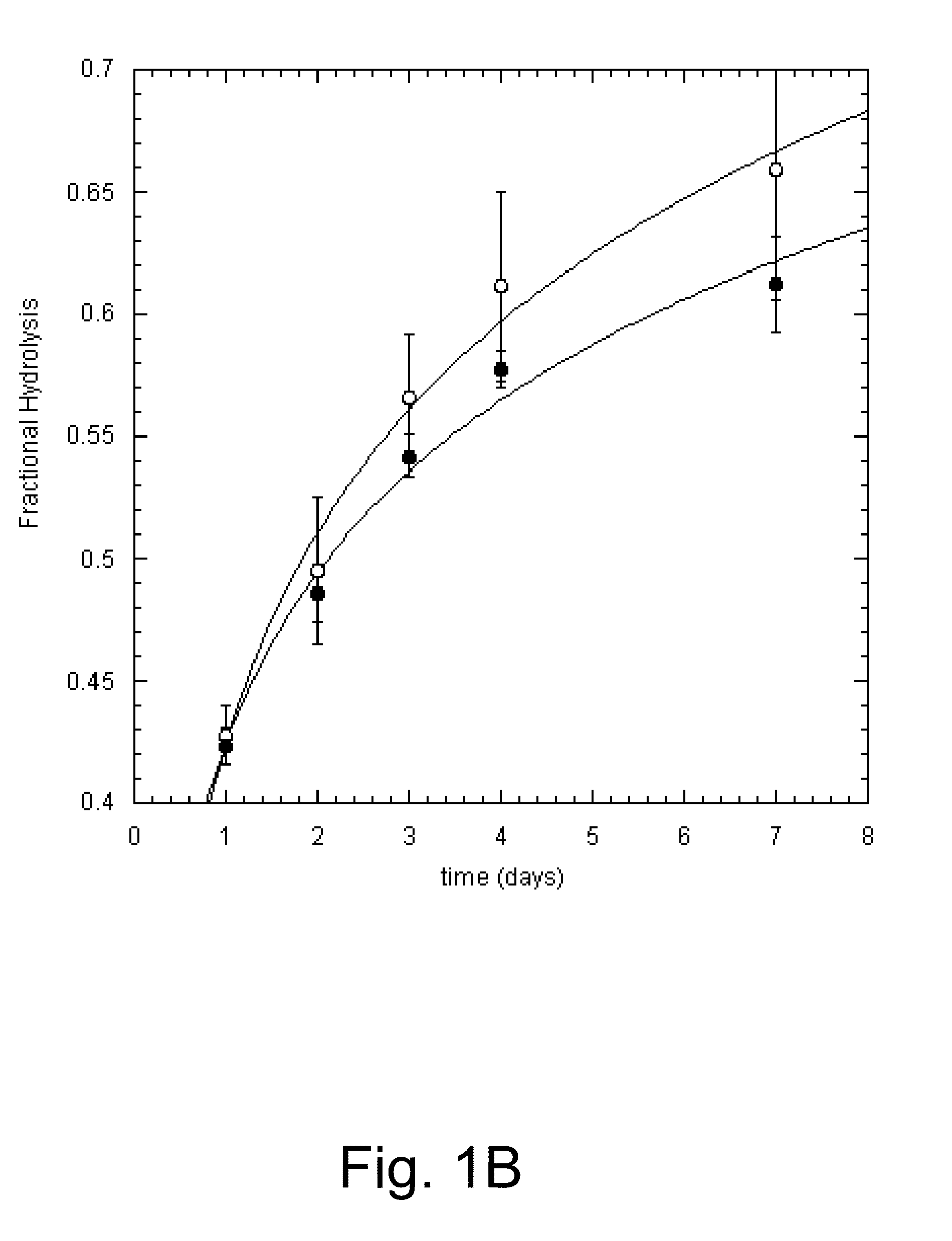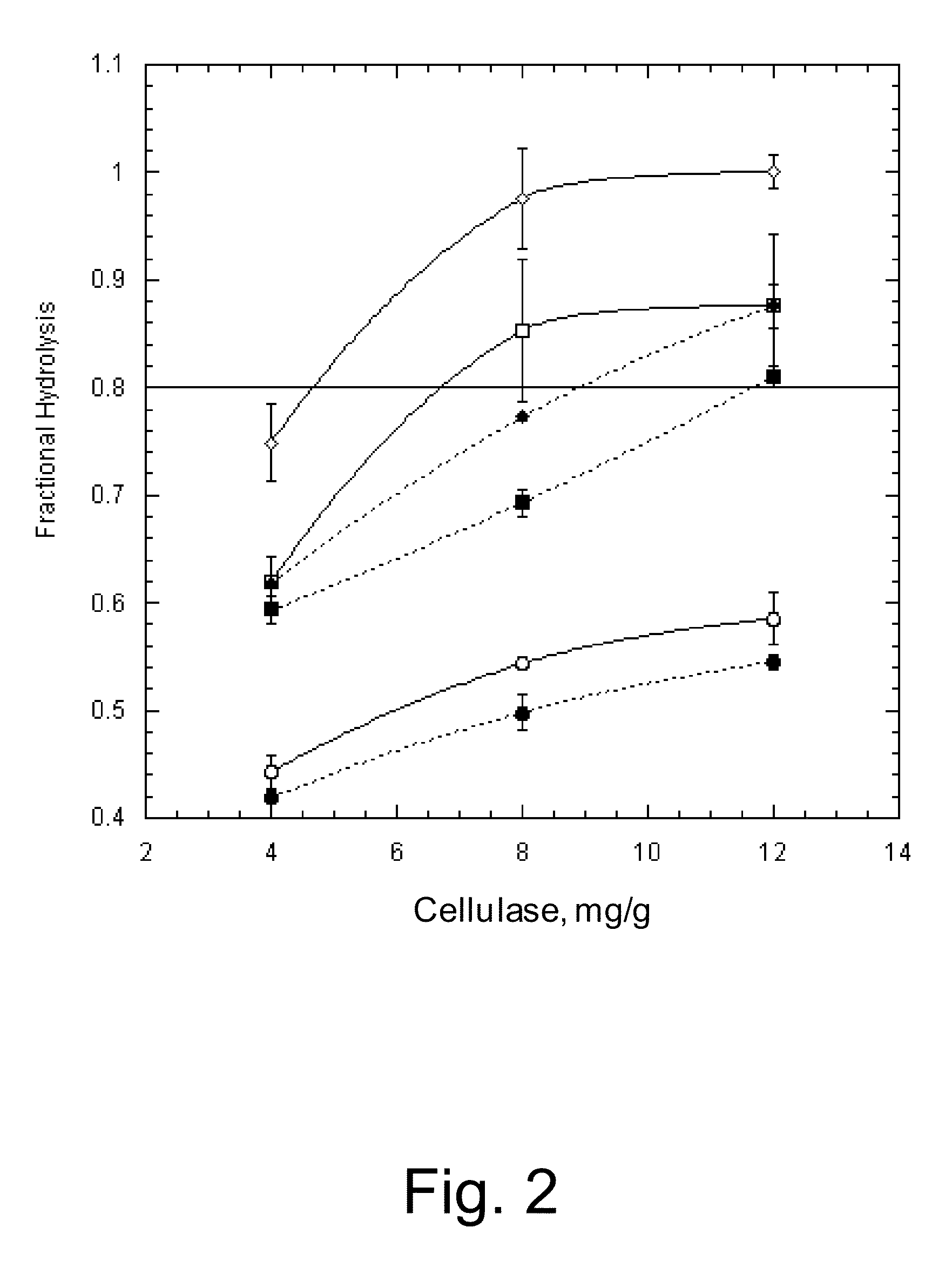Methods for increasing hydrolysis of cellulosic material
- Summary
- Abstract
- Description
- Claims
- Application Information
AI Technical Summary
Benefits of technology
Problems solved by technology
Method used
Image
Examples
example 1
Growth of Myceliophthora thermophila CBS 117.65
[0314]Two plugs from a PDA plate of Myceliophthora thermophila CBS 117.65 were inoculated into a 500 ml shake flask containing 100 ml of shake flask medium to obtain culture broth for the purification of a cellobiose dehydrogenase. PDA plates were composed of 39 g of potato dextrose agar and deionized water to 1 liter. The shake flask medium was composed of 15 g of glucose, 4 g of K2HPO4, 1 g of NaCl, 0.2 g of MgSO4.7H2O, 2 g of MES free acid, 1 g of Bacto Peptone, 5 g of yeast extract, 2.5 g of citric acid, 0.2 g of CaCl2.2H2O, 5 g of NH4NO3, 1 ml of trace elements solution, and deionized water to 1 liter. The trace elements solution was composed of 1.2 g of FeSO4.7H2O, 10 g of ZnSO4.7H2O, 0.7 g of MnSO4.H2O, 0.4 g of CuSO4.5H2O, 0.4 g of Na2B4O7.10H2O, 0.8 g of Na2MoO2.2H2O, and deionized water to 1 liter. The shake flask was incubated at 45° C. on an orbital shaker at 200 rpm for 48 hours. Fifty ml of the shake flask broth was used t...
example 2
Purification of Myceliophthora thermophila CBS 117.65 Cellobiose Dehydrogenase
[0316]The Myceliophthora thermophila CBS 117.65 harvested broth described in Example 1 was centrifuged in 500 ml bottles at 13,000×g for 20 minutes at 4° C. and then sterile filtered using a 0.22 μm polyethersulfone membrane (Millipore, Bedford, Mass., USA). The filtered broth was concentrated and buffer exchanged with 20 mM Tris-HCl pH 8.5 using a tangential flow concentrator (Pall Filtron, Northborough, Mass., USA) equipped with a 10 kDa polyethersulfone membrane (Pall Filtron, Northborough, Mass., USA). To decrease the amount of pigment, the concentrate was applied to a 60 ml Q-SEPHAROSE BIG BEAD™ column (GE Healthcare, Piscataway, N.J., USA) equilibrated with 20 mM Tris-HCl pH 8.5, and eluted stepwise with equilibration buffer containing 600 mM NaCl. Flow-through and eluate fractions were analyzed by SDS-PAGE using 8-16% CRITERION™ SDS-PAGE gels (Bio-Rad Laboratories, Inc., Hercules, Calif., USA) and s...
example 3
Pretreatment of Corn Stover
[0320]Corn stover was pretreated at the U.S. Department of Energy National Renewable Energy Laboratory (NREL) using dilute sulfuric acid. The following conditions were used for the pretreatment: 1.4 wt % sulfuric acid at 165° C. and 107 psi for 8 minutes. According to NREL, the water-insoluble solids in the pretreated corn stover (PCS) contained 56.5% cellulose, 4.6% hemicellulose and 28.4% lignin. Cellulose and hemicellulose were determined by a two-stage sulfuric acid hydrolysis with subsequent analysis of sugars by high performance liquid chromatography using NREL Standard Analytical Procedure #002. Lignin was determined gravimetrically after hydrolyzing the cellulose and hemicellulose fractions with sulfuric acid using NREL Standard Analytical Procedure #003. The PCS was washed with a large volume of DDI water on a glass filter.
PUM
| Property | Measurement | Unit |
|---|---|---|
| Volume | aaaaa | aaaaa |
| Volume | aaaaa | aaaaa |
| Volume | aaaaa | aaaaa |
Abstract
Description
Claims
Application Information
 Login to View More
Login to View More - R&D
- Intellectual Property
- Life Sciences
- Materials
- Tech Scout
- Unparalleled Data Quality
- Higher Quality Content
- 60% Fewer Hallucinations
Browse by: Latest US Patents, China's latest patents, Technical Efficacy Thesaurus, Application Domain, Technology Topic, Popular Technical Reports.
© 2025 PatSnap. All rights reserved.Legal|Privacy policy|Modern Slavery Act Transparency Statement|Sitemap|About US| Contact US: help@patsnap.com



